DX7 V
Der Gamechanger der FM-Synthese
Der DX7 ermöglichte die digitale Synthese für alle Musikschaffenden. Er schickte seine Sounds direkt in die Charts und war der bestverkaufteste Synthesizer aller Zeiten. Der DX7 V ist eine Software-Neuinterpretation des Instruments, das diesen legendären glasigen, druckvollen und kristallklaren Klang in deine DAW bringt.

FM the way it was
meant to be heard.
Die FM-Synthese hat die Klangpalette von Keyboardern und Produzenten fast über Nacht explodieren lassen.
Auf analoge Weise nicht zu erzeugen, ist es immer noch einer der vielseitigsten Ansätze zur Klanggenerierung, die es gibt. Allerdings empfanden Musiker den ursprünglichen DX als schwer zu programmieren und es mangelte ihnen an Echtzeitkontrollen. Der DX7 V behebt diese Nachteile und Einschränkungen und fügt außerdem jede Menge Funktionalität hinzu – perfekt für das moderne Musik-Rig.
Zurück in die...
Du willst den 1980er-Jahre-Chart-Sound von Sting, Tina Turner oder allem, das im Umfeld von David Foster passiert ist? Dann ist der DX7 V wie gemacht für dich.
Innovation
Angeschlagene, gezupfte und gestrichene Klänge waren die Spezialität des DX, ebenso perkussive Keyboard-Sounds wie E-Pianos und Clavs. Mit liebevoller Präzision entwickelt, um alle Facetten von FM entdecken zu können.
Digitale Persönlichkeit
Von FM-Klassikern über sich bewegende Pads bis hin zu glitzernden Motion-Synth-Klanglandschaften werden sich die Zuhörer fragen, wie du genau „diesen“ Sound gemacht hast.
Gut gewachsen
Erweitert um zahlreiche Funktionen wie Temposynchronisation und MIDI-Mapping lässt sich der klassische Sound des DX7 V problemlos in den modernen Workflow einbinden.
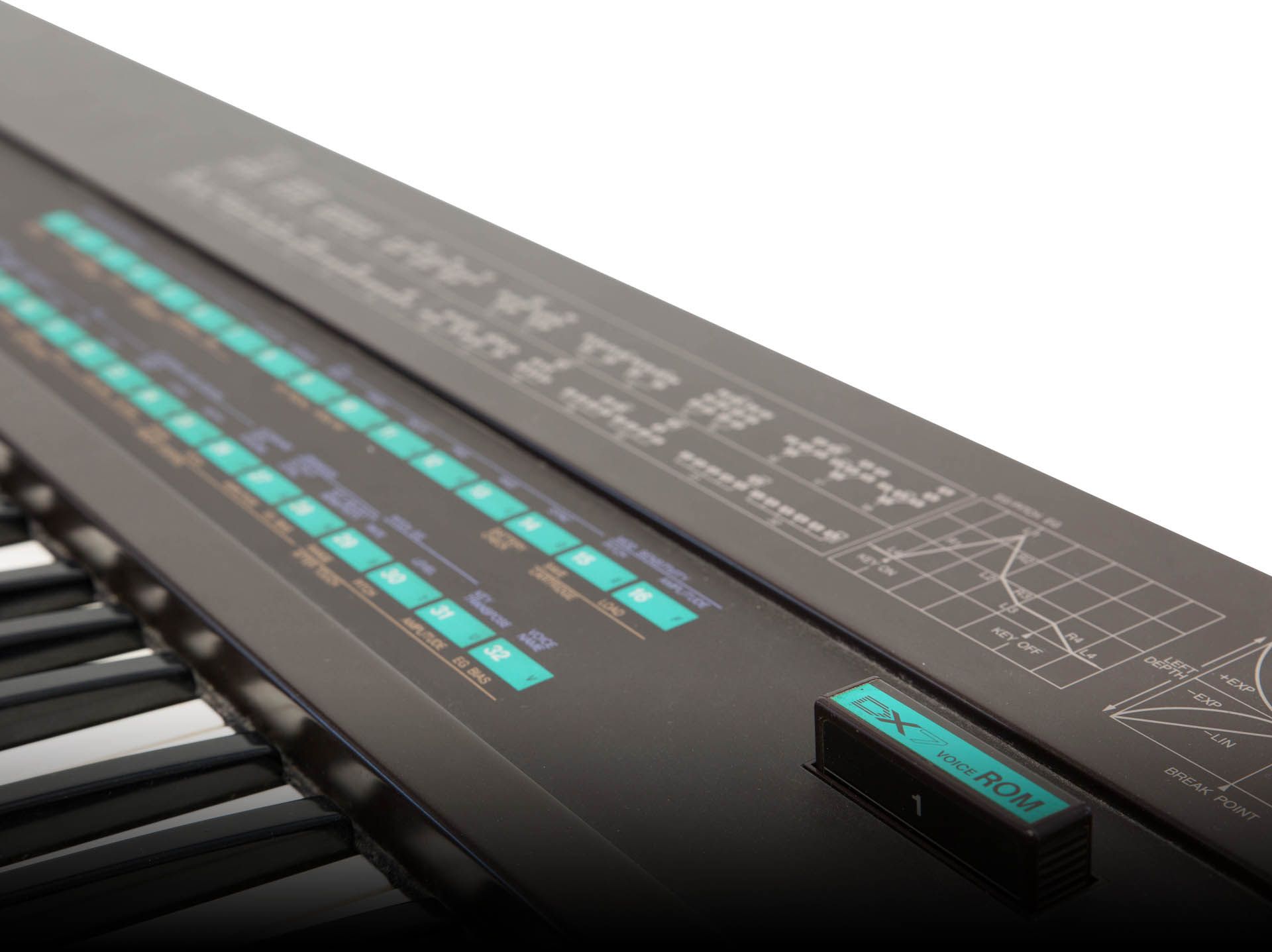
Music for the
Masses
FM erzeugte problemlos Sounds, die analogen Synthesizern fehlten.
When the DX made it affordable, everybody wanted one — and pretty much everybody got one.
Once the exploratory genius of a Stanford University professor met the marketing savvy and production capacity of the world’s largest musical instrument maker, keyboards would never be the same again. After its introduction in 1983, it would go on to sell over 200,000 units and define countless sounds from the ‘80s and beyond.
FM ist grundsätzlich eine einfache Synthese: Audiofrequenzmodulation einer Wellenform durch eine andere. Aber es war Dr. John Chowning von der Stanford University, der FM als eigenständige Synthesemethode nutzbar machte. Seine Arbeit bewies, dass man durch sorgfältiges Abstimmen der modulierenden Wellenformen die harmonischen Profile jeglicher Arten von akustischen Instrumenten nachahmen konnte.
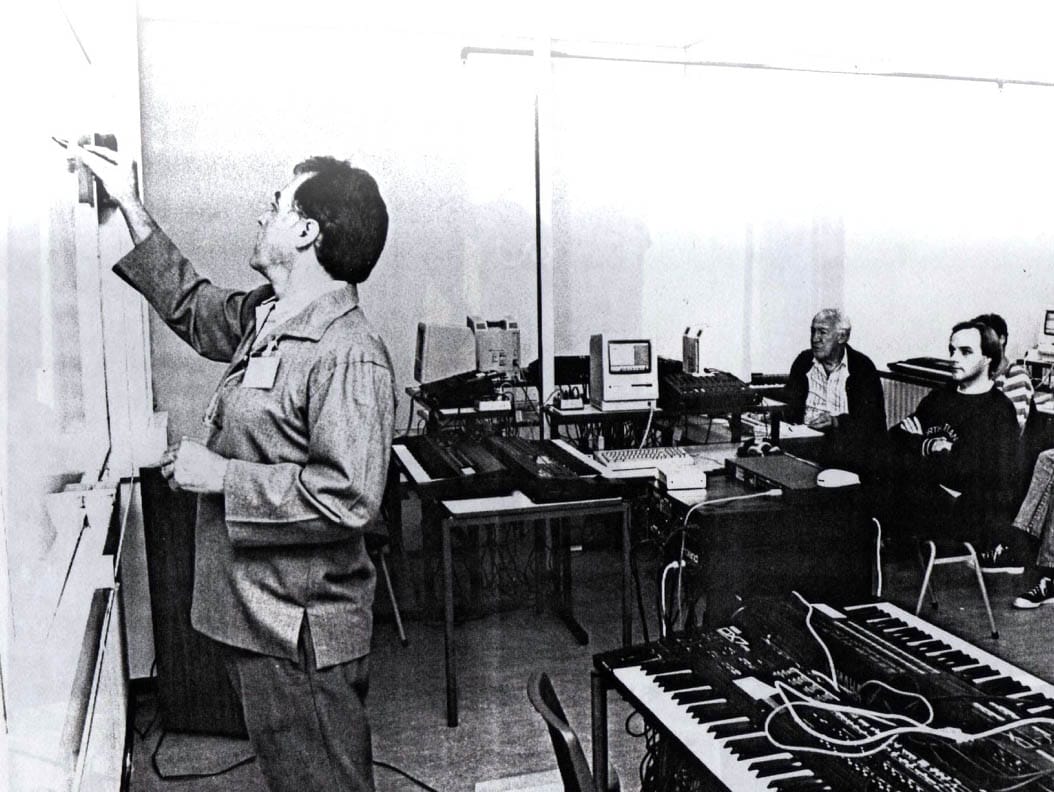
Yamaha® licensed the technology from Stanford in the mid-’70s, leading to 1980’s massive GS1 - with its piano-like cabinetry and green-screen programming terminal - co-developed with Dr. Chowning. New England Digital had also re-licensed FM from Yamaha as the basis of their first Synclavier systems. The word spread through the synth industry: Digital was the future.
Eine vernünftige Editierbarkeit von FM-Patches war eine der Hürden im Marktbereich für professionelle Synthesizer. Mit seinen Folientasten und dem Dateneingabe-Schieberegler vereinfachte der DX7 das im Jahr 1983. Enorm wichtig war der Preis von nur knapp $2000. Er bot sechs FM-Operatoren, 16fache Polyphonie sowie ein anschlag- und aftertouch-sensitives Keyboard, außerdem 32 Preset-Speicherplätze und zusätzliche Soundbänke auf dedizierten Speicher-Karten. Das alles zusammen drängte die Analog-Synthesizer in die Ecke – allein schon aufgrund der technischen Daten.
Die Werkpresets von Gary Leuenberger und David Bristow demonstrierten eindrucksvoll, wie realistisch der DX7 ein E-Pianos, Mallets, Harmonikas, Slap-Bässe und mehr erzeugen konnte. Diese Sounds fanden sich praktisch in jedem Song der Pop-Charts nach 1983. Hobby-Keyboarder in Kneipen-Bands konnten sich nun das gleiche Instrument leisten wie die Künstler, dessen Coverversionen sie performten. Sobald man einmal auf einen DX spielte, musste man einen haben.
Um das Instrument für unter $2.000 verkaufen zu können, mussten Abstriche gemacht werden. Beispielsweise erzeugten Operatoren nur Sinuswellen und teilten sich eine einzige Hüllkurve. Einige Musiker beklagten das Fehlen von Reglern und Echtzeitsteuerung. Der DX7 V öffnet alle Begrenzungen und bringt einen Traum-Synthesizer aus den 1980er-Jahren in deine kreative Realität.
A different breed
of synthesizer
Der DX7 V ist eine originalgetreue Nachbildung des Instruments, das den einzigartigen Klang der FM-Digitalsynthese einer breiten Masse zugänglich machte.

Operatoren
Die sechs Signalgeneratoren des DX7 V – die sogenannten Operatoren – können als Carrier oder Modulatoren verwendet werden. Jeder Operator besteht aus einem einfachen Oszillator mit eigener Frequenz- und Pegelsteuerung, sowie einem dedizierten, hüllkurvengesteuerten Verstärker. Im Allgemeinen beeinflusst die Hüllkurve des Carriers die Amplitude, während die Hüllkurve des Modulators die Klangfarbe ändert, wobei optionales Keyboard-Tracking für das letzte realistische Element der Klangfarbe verantwortlich ist, die sich mit der Tonhöhe ändert – wie bei einem akustischen Instrument.
Modulation
Die Klangfarbe eines FM-Sounds hängt stark vom Verhältnis der Carrier- und Modulator-Operatoren ab. Wenn die Modulatorfrequenz über das Keyboard gesteuert wird, bestimmt das Frequenzverhältnis zum Carrier das grundlegende harmonische Profil des Klangs, wobei ganzzahlige Verhältnisse besser erkennbare Wellenformen erzeugen und ungerade Verhältnisse typischerweise zu klirrenderen, unharmonischeren Wellenformen führen. Modulatoramplituden wirken sich auch auf die Klangfarbe aus, wobei höhere Frequenzen im Allgemeinen hellere Klänge ergeben.

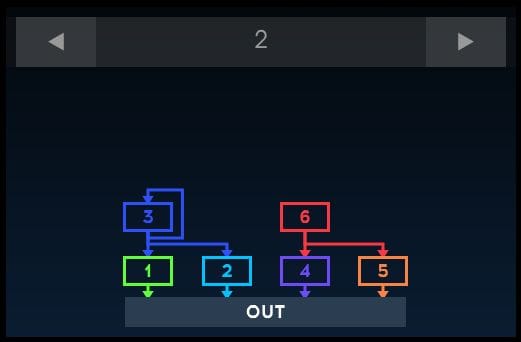
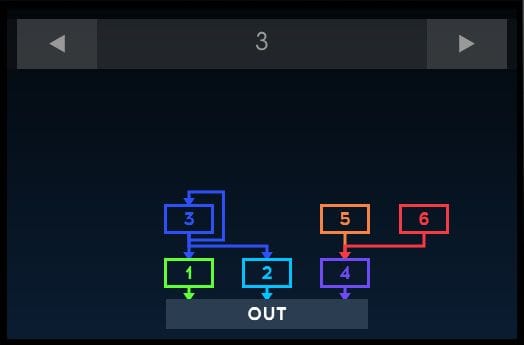



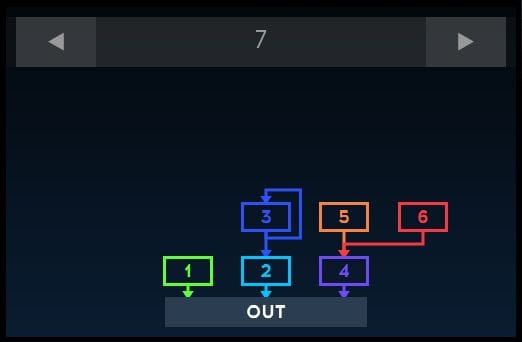

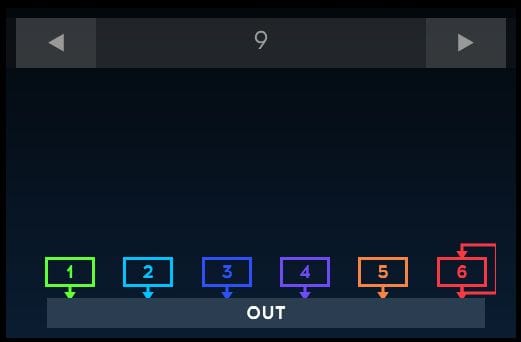
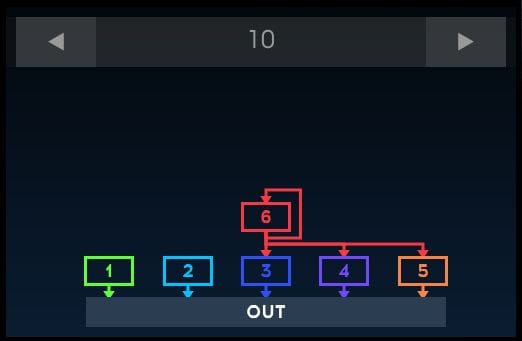
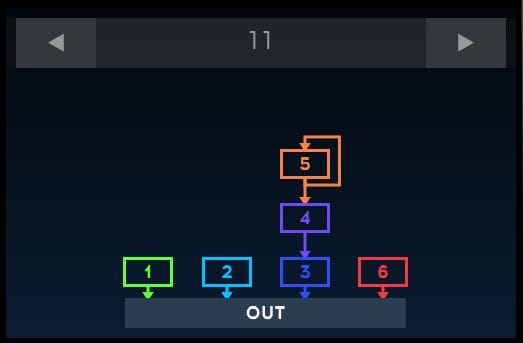
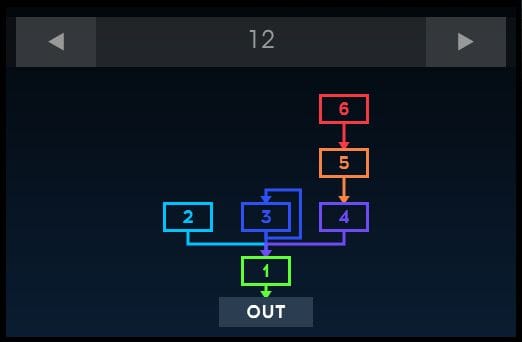

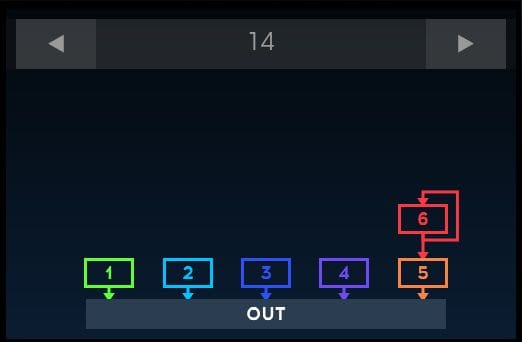
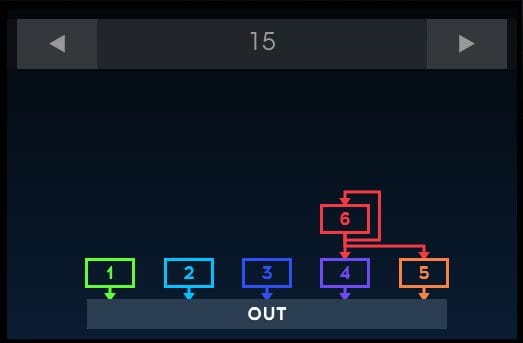

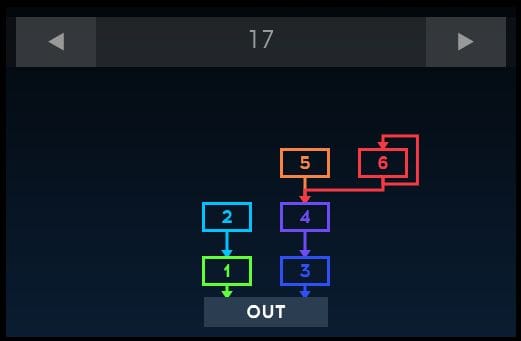
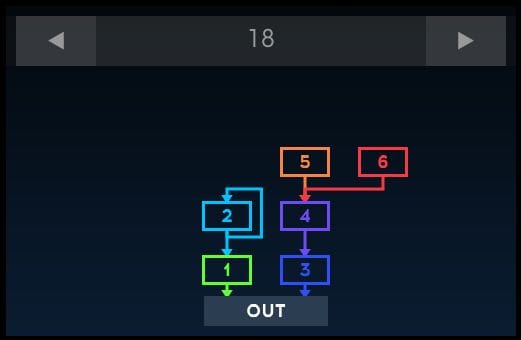

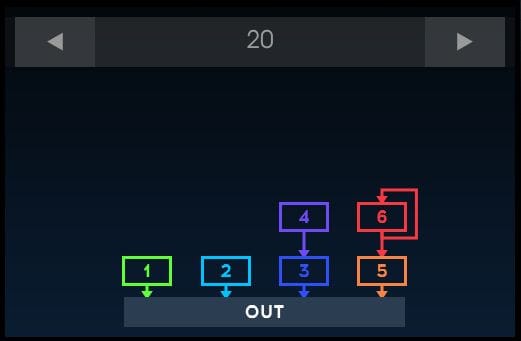
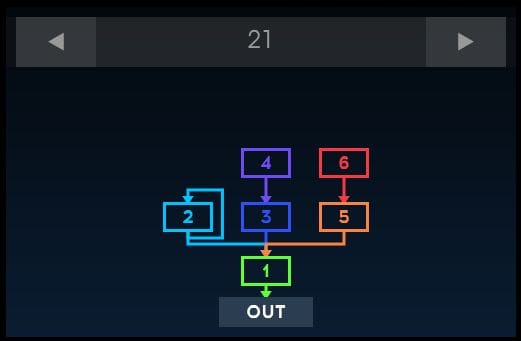

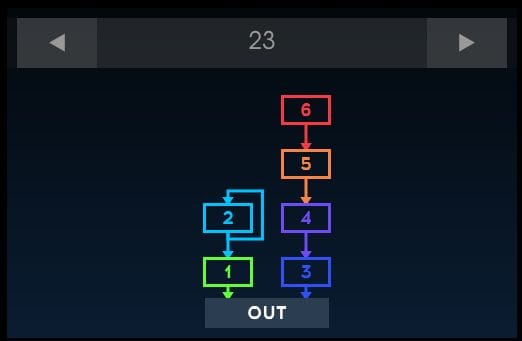
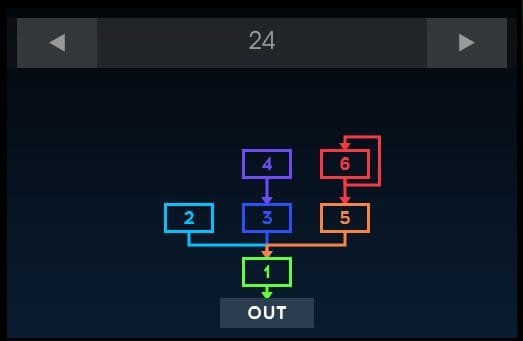
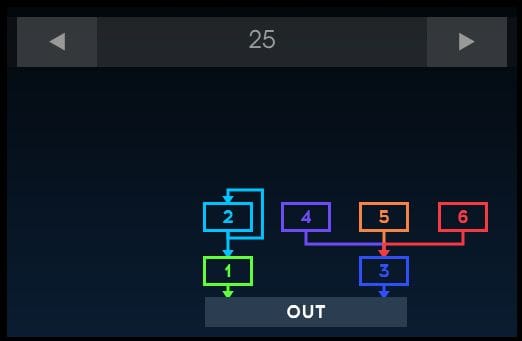
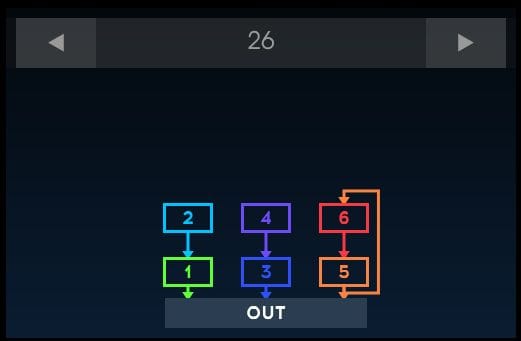

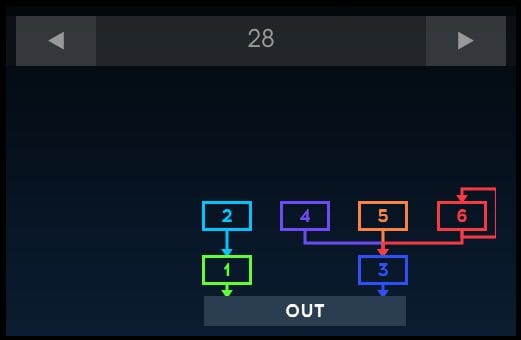
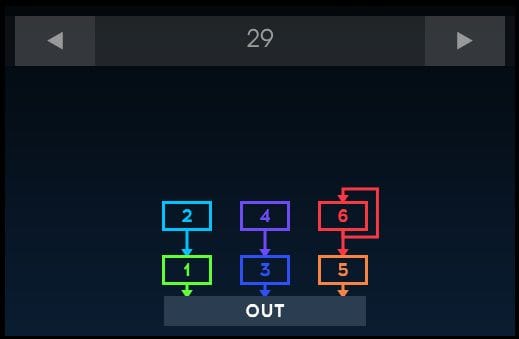
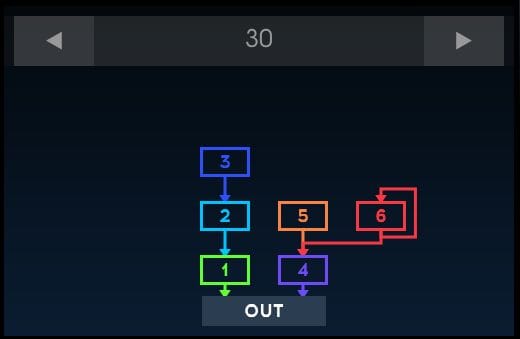
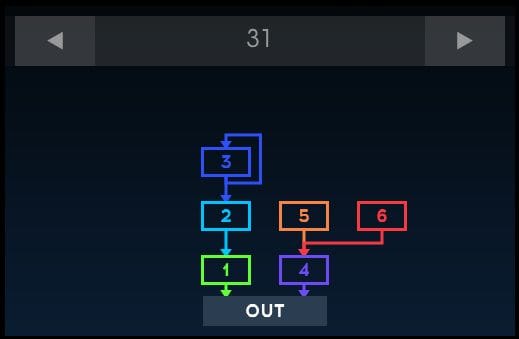
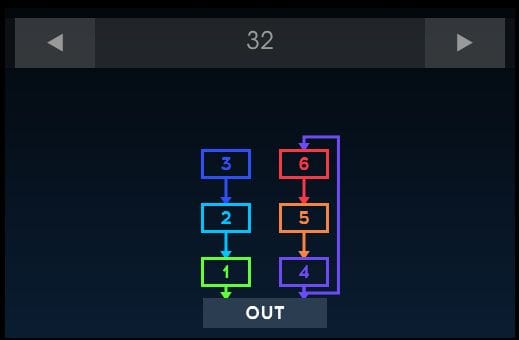
Algorithmen
Eine Auswahl von 32 Algorithmen im DV 7 V bestimmt die architektonische Beziehung der sechs Operatoren als Carrier und Modulatoren. Diese vertrauten Grundlagen sind perfekte, vorgefertigte Ausgangspunkte zum Erstellen und Modifizieren von Sounds bis hin zur Unkenntlichkeit. Zusätzlich zu den direkten Verbindungen der Carrier zum Ausgang und den verschiedenen Ergebnissen der Modulatoren bieten einige Algorithmen auch eine Rückkopplungsschleife (Feedback), die alles von rauen Effekten bis hin zu ausgewachsener Verzerrung zaubert.
FM Made
Easy
All the sound of the hardware.
All the real-time control it never had.
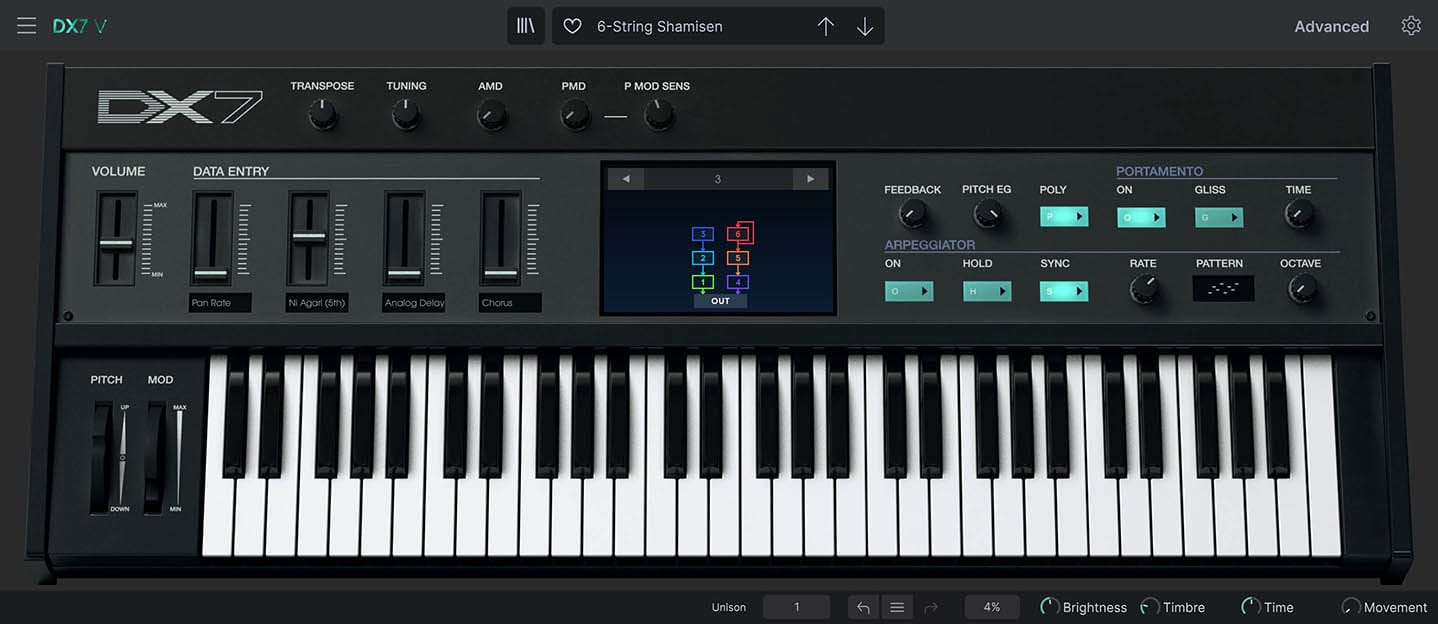
_1
_2
_3
_4
_5
_6
01. Digital ’Rithm
Wähle einen der ursprünglichen 32 FM-Algorithmen aus oder schalte diese schnell durch. Um die Bearbeitung zu vereinfachen, sind die Operatoren farblich gekennzeichnet.
02. Analog Control
Mit den Dateneingabe-Schiebereglern, die mehrere zuweisbare Parameter gleichzeitig steuern, kannst du mit einer einzigen Bewegung interessante Performance-Gesten ausführen.
03. Global Group
Globale Synthesizer-Einstellungen wie Stimmung, Transponierung oder Tonhöhen-Intensität und Amplitudenmodulation sind immer verfügbar.
04. Quick Edits
Stell hier die Intensität der klangformenden FM-Feedback-Schleife sowie die Intensität der Tonhöhenhüllkurve ein.
05. Just Glide
Musiker liebten das polyphone Portamento des DX. Aber um es zu nutzen, musste man ein Menü öffnen Schalte es im DX7 V einfach ein und pass die Zeit an.
06. Ups and Downs
Füge Riffs und Bewegung mit dem temposynchronisierbaren Multi-Pattern-Arpeggiator hinzu – eine Option, die es im Original nicht gab.
DX on
Steroids
Mehr Wellenformen. Mehr Hüllkurven. Mehr Modulationen. Filter und Effekte. Bei der Hardware hätten diese Funktionen einen fünfstelligen Preis gekostet.
Mit nur einem Schieberegler und einer Reihe von Tastern war die Programmierung des Originals etwas mühsam. Einer der Pioniere der elektronischen Musik, Brian Eno, hat sogar einen maßgeschneiderten Controller mit Drehreglern gebaut, um jeden Parameter seines DX7 direkt erreichen zu können. Mit dem DX7 V gibt es nicht nur mehr von allem, sondern unsere Bedienoberfläche macht die Steuerung auch viel einfacher – und das macht Spaß.
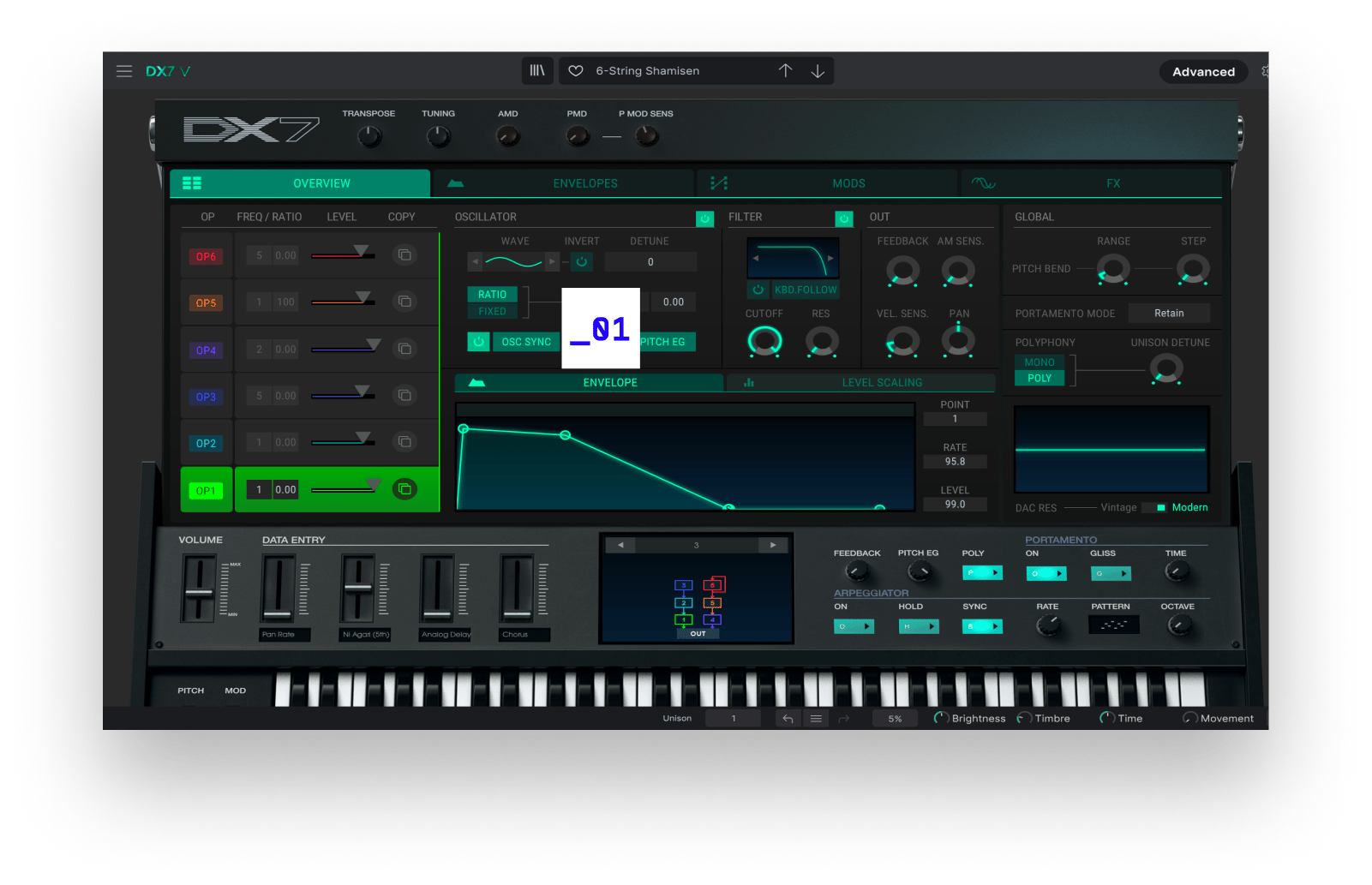
In Aktion
anhören
Wie bei so vielen klassischen Synthesizern heisst es heute, dass der DX „einen Soundcharakter besitzt“.
Hi-breed
Winter in Summer
Ambient
DX Demo
Electronica
Funkit
Presets
Der Wiedererkennungswert des DX liegt unter anderem daran, dass selbst die Profis eher dazu neigten, sich bei den Werkpresets zu bedienen, anstatt zu lernen, wie man das Gerät programmiert.
Beim DX7 V gibt es keine derartigen Hindernisse. Deshalb haben sich unsere hochklassigen Sounddesigner an die Arbeit gemacht und 540 Presets erstellt, die alle erdenklichen Instrumententypen und Musikstile abdecken. Lade nach dem Anhören die kostenlose Demo herunter und spiele sie alle an!
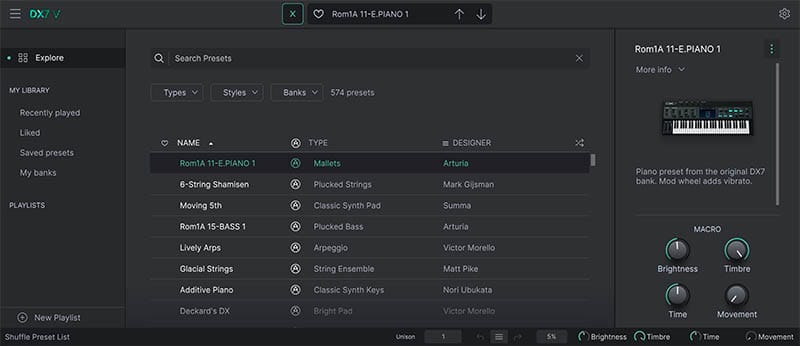
Artist
Corner

Mark Ayres
Radiophonic Workshop
"I’ve owned many Yamaha FM variations down the years and I am delighted I can reproduce them all and even load my original patches. It sounds great."

Paul Frazier
Arrested Development, St. Vincent, Chaka Khan
"The DX-7 was never an easy keyboard to program and I never loved it. Arturia has made me a fan! "
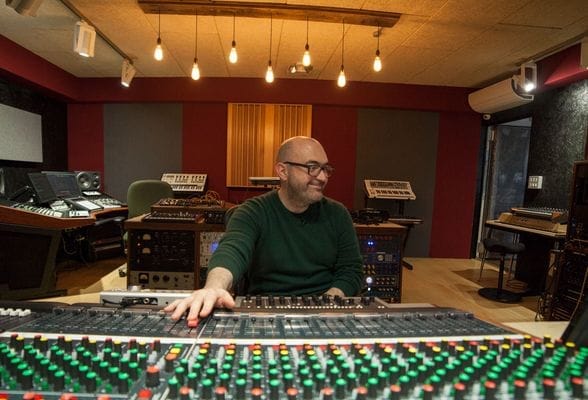
Paul Godfrey
Morcheeba
"I like playing The Doogie Howser theme with the new DX7 V. "

Metrik
DJ / Producer
"Love the Arturia DX7 V. It has that vintage FM sound yet can be programmed like a modern soft-synth. "

Dense & Pika
DJ / Producer
"Can’t believe how close the DX7 V is to the real thing... it is mind blowing, next level!"
Beacon
"The DX7 V retains so much of the character that made the original instrument unique and the presets are top-notch. Definitely a new regular in our toolkit."

Eren Cannata
Writer / Producer
"Arturia's DX 7 V makes me feel at home. It's amazing having the familiar sounds of the DX 7 at my finger tips, but finally easy to navigate; sounding not just as good as the original, way better."

Krikor
Producer
"Arturia’s DX7 emulation has become my go to synth, I don’t think I made a track without it in the last year. I can load my programs to it, its vintage DAC mode is great and it just sounds like the real deal."

Richard Henshall
Haken
"I've always been a sucker for the synthwave sounds of the 80s. I was blown away by the quality of the tones it has to offer and the intuitive user interface made creating my own patches a walk an absolute breeze!"

Allert Aalders
"There is so much creative potential"

Allert Aalders
"I have to admit, when I first heard the DX7 in the 80s I hated it. I though it was cold and it couldn’t do what a Prophet or a Jupiter could. Then I started studying music technology at Utrecht School of Arts, and Ernst Bonis introduced me to FM synthesis. The DX7 suddenly became incredibly inspirational, it had so much creative potential once you got your head around it! It’s a world of it’s own, there’s almost no way you could do these sounds with a subtractive synth. I love the fact that the DX7 V expands on that with a great modulation matrix, excellent new envelope generators, and great added FX."

Allert Aalders
"First and foremost, I wanted to do a balance of “Typical FM” sounds and more organic sounding stuff. If you set modulator levels beyond a certain point you start hearing the “bessel functions” in the sound; a sort of harsh movement that’s typical of many abrasive FM sounds. Although this sound is in itself an important feature, taming them leads to a more natural quality. While programming I was looking for usability, expressiveness through the use of the velocity parameters and the macro sliders, and of course a bit of experimentation."

Mark Gijsman
"There is so much creative potential"

Mark Gijsman
"What made the original DX7 special in my opinion is that it sounded like nothing else out there, it was ahead of it's time, it is a very dynamic synthesizer. The DX7 V expands on the original, not only the new waveforms but also the inclusion of the modulation matrix, in which this instrument is in a league of it's own. The coolest thing is that the YM3812 sound chip waveforms are included, a brilliant move!"

Mark Gijsman
"Because the DX7 V can be programmed in the same way as the original, I could approach it exactly like I was programming my old DX7 Mark 1. I like to give the user a wide palette of sounds, so that no matter what genre you favor, you can always find something to use in your production. Pads and emulations of acoustic instruments are my favorites."

Clément Bastiat
"Simple things done well are often the best"

Clément Bastiat
"I feel that the original DX7 is thought to have democratized FM synthesis, even though technically it uses a type of synthesis called phase modulation. I was pleasantly surprised to see that the DX7 V also utilizes this rare form of synthesis! I would say the main strengths of the DX7 V are its new features: the additional waveforms which greatly enhance its versatility; better envelopes than the original hard-to-predict ones; great new filters; and the Mod Matrix. All those things make it possible to do old school DX7 sounds, as well as modern PM-subtractive hybrid synthesis."

Clément Bastiat
"As the factory sounds of the original DX7 are already inside the DX7 V factory bank, and thousand of DX7 Sysex presets can be found online, I decided to experiment with the more modern tones available in the emulation. Most of the time I had specific sounds in mind, but I also let myself float and explore."

Clément Bastiat
"The first thing I do is find a great operator sound, without using the envelopes or anything else. Just tweaking the ratios and making sure your first ingredient is great. From there, you can start to 'freestyle'."

Clément Bastiat
"I tried my best to cover the whole range of the sounds the machine could create. From complex percussion sequences to skull shaking aggressive bass sounds, but also softer ambient pads."

Matt PIKE
"It takes the original depth and diversifies it."

Matt PIKE
"The original DX7 opened an entirely new sonic palette to musicians with its approach to synthesis. It's routing, envelopes, and keyboard scaling options allowed for an extremely broad range of timbres, from the natural to the extreme. What the DX7 V does exquisitely is take that original depth and diversify it. The modulation matrix and alternative waveforms let you combine modular and subtractive synthesis techniques with the power of digital FM."

Matt PIKE
"I tried to free my mind from the sounds people expect to hear from the DX7, as classic presets are available online for SYSEX imports and sound fantastic on the DX7 V. Instead I wanted to push the sonic capabilities the extra features enabled and explore textural themes that felt synonymous with the era of the original synth. Some sounds came about by building new timbres, some from heavily modulating and breathing new life into classics."

Summa
"The DX7 V is so close to the original"

Summa
"In my opinion, the DX7 is what I tend to call the Minimoog of FM synths, with just the right amount of depth and complexity. Due to its imperfections, it has a wider sweet spot than most of the other hardware FM-Synths, it always seems to sound 'right', or at least 'interesting'. In a way, it's a perfect synth to get into FM."
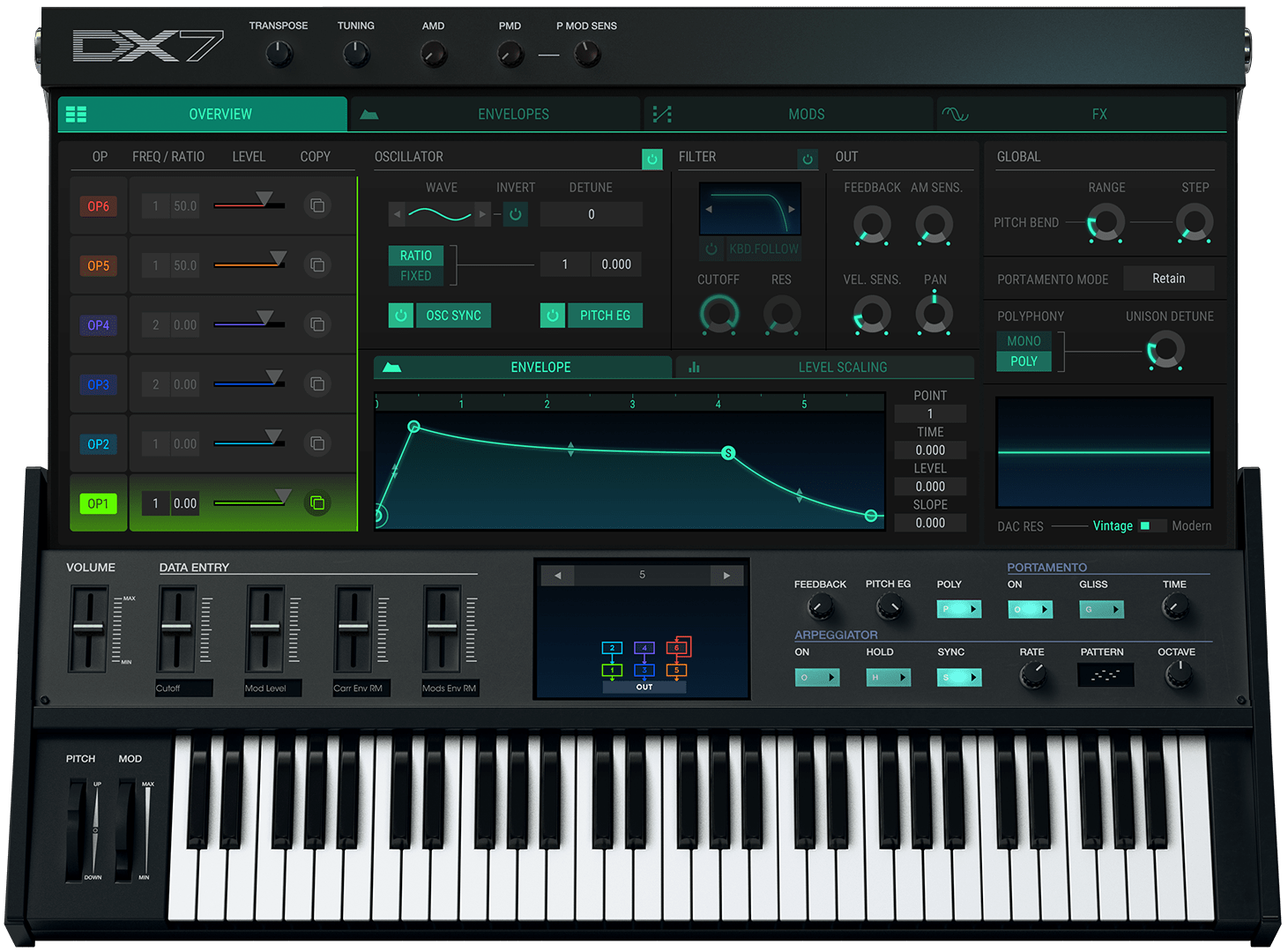
Enthalten in der
V Collection 11 Pro
Dieses Instrument ist Teil der V Collection Pro – einer Premium-Sammlung von Software-Instrumenten, die für unvergleichliche Klangforschungen entwickelt wurden.
Von authentisch emulierten Keyboards über Hybrid-Synth-Engines bis hin zu wunderschön eingefangenen akustischen Klängen ist jedes Instrument für den aktuellen Produktionsworkflow optimiert – die V Collection bietet die besten Tasten-Instrumente aller Zeiten.
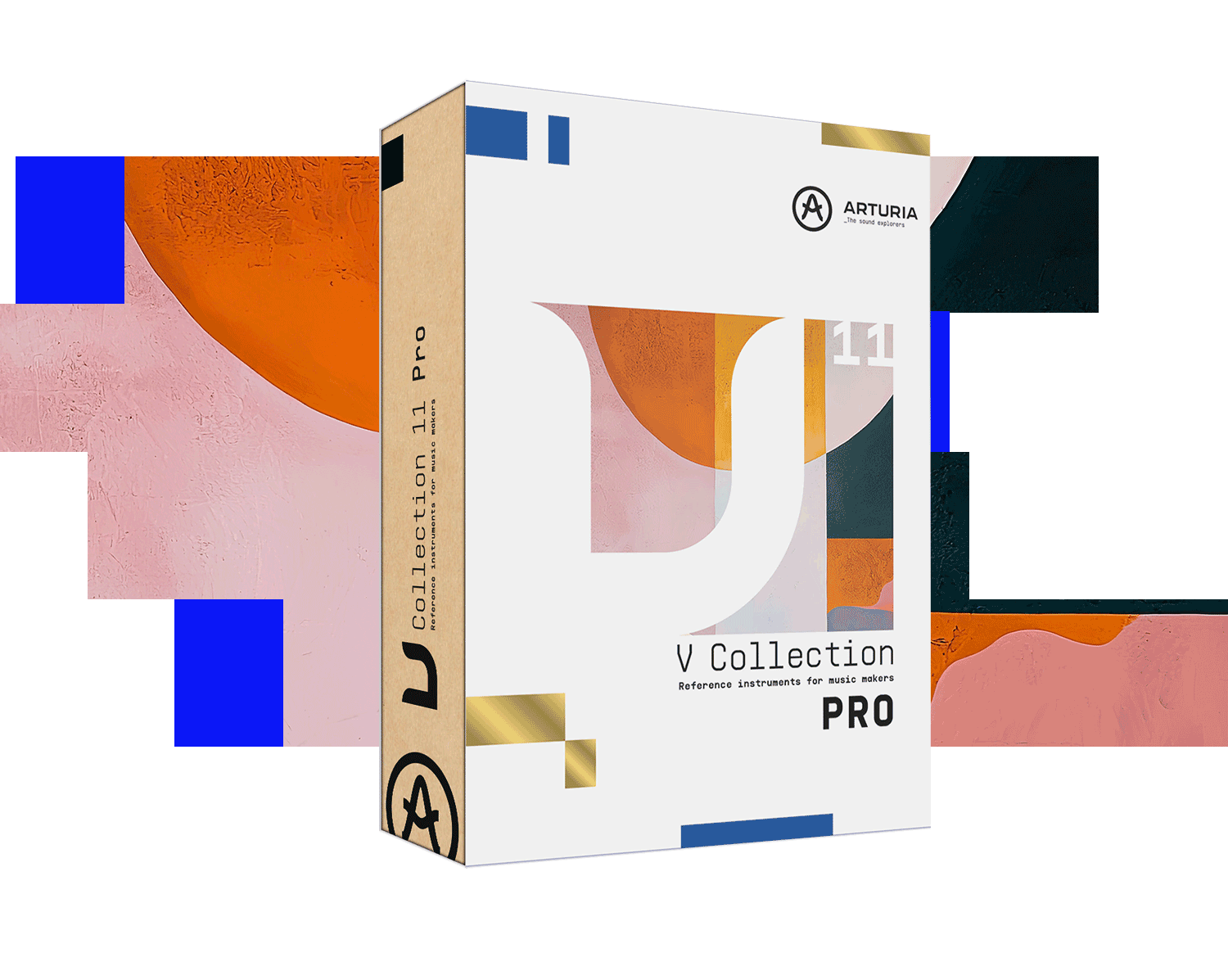
Die Funktionen,
die du brauchst

Gallery
Main Features
32 original DX7 algorithm
All DX7 original parameters
Original DX7 SysEx import
25 available waveforms per operators
6 Operators with multi-mode filter and feedback per operators
DX7, DADSR and Multi-Segments envelopes (syncable and loopable) per operators
2 Modulation envelopes
4 assignable macros
Advanced modulation matrix
A step sequencer, 2 LFOs with 6 waveforms and an arpeggiator
4 FXs slots that can be routed in parallel or in serie
An oscilloscope
Vintage and Modern DAC Mode for a proper emulation of the DX7 converter
32 voices of polyphony
4 voices of unison with unison detune
432 factory presets





